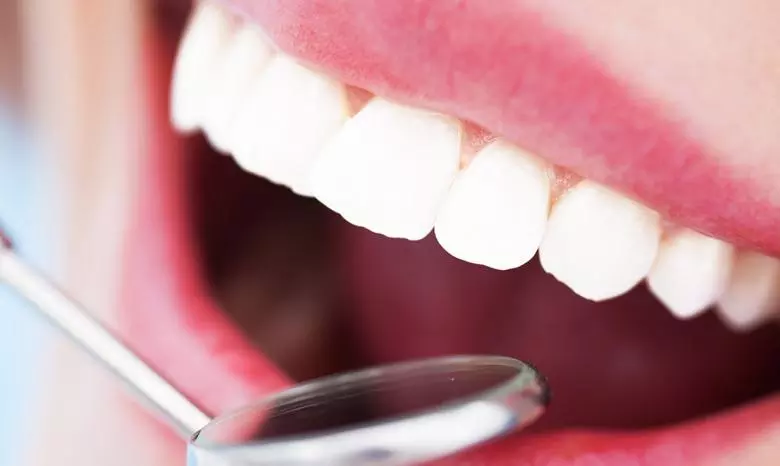Whatsapp: +90 (554) 160 5747 Online Appointment

Laminates are very thin porcelain restorations generally applied on the front teeth. In this technique called Porcelain Laminate veneers, the goal is to achieve perfect color and texture harmony by removing an amount of material even less than what is taken in a normal filling, and only from the front surfaces of the teeth.
Porcelain laminates require very little or no preparation on the teeth. Because of their excellent color translucency and the special adhesives used, porcelain laminates yield very successful aesthetic results. For this reason, they are widely used among restorative options. Produced using highly sensitive techniques and in very thin layers, laminates adapt excellently to the teeth and surrounding tissues.
Laminates are prepared with minimal intervention to the teeth. In some cases, no intervention is needed at all; just an impression of the tooth is taken, and the porcelain is fabricated in a dental laboratory. In its finished form, the thickness of a laminated tooth is approximately 0.5 to 0.7 mm. Since preparation is done only on the front surfaces of the teeth, it is considered a conservative treatment. Because of its light-transmitting property, the prosthesis reacts just like natural teeth.
Application areas of Porcelain Laminates:
1. Closing gaps in the front teeth.
2. Treating fractures caused by trauma.
3. In cases of extremely dark-colored teeth where teeth whitening methods are insufficient.
4. In cases of decay and crowding, where all teeth need to be covered with porcelain.
When are porcelain laminates preferred?
Laminate veneer restorations are basically done to eliminate discolorations and to correct shapes to a certain extent. They can be a cosmetic alternative in advanced cases of antibiotic or fluoride staining (where bleaching does not yield results) and in congenital structural and color defects.
They can also be used in closing gaps between teeth (diastema closure), restoring broken or worn-down teeth, correcting damaged and discolored old fillings, and correcting crowded or crooked teeth (as an alternative to orthodontic treatment).
Are porcelain laminates long-lasting? Are they durable?
With proper oral care, laminates can be used for many years without problems. They are made of porcelain, which has superior properties compared to other adhesive systems (bonding). They are more resistant to staining and wear. To extend their life, pay attention to oral hygiene, and avoid biting into very hard foods and bad habits like nail-biting.
What are the advantages of porcelain laminates?
One of the biggest advantages of porcelain laminates is that they require minimal intervention on the teeth. As a result, the treatment time is shorter, which makes patients more comfortable. Additionally, because there is minimal intervention, it is considered a more conservative treatment for the teeth. Another advantage is their light-transmitting property, making them very similar to natural teeth and helping achieve a natural appearance more easily. They also come in various color options.
They provide excellent adaptation where the tooth and gum meet. Unlike metal-supported porcelain bridges, porcelain laminates do not create any shadow at the gum line. Moreover, because there are no separate appointments for metal try-in, polishing, zirconium, or substructure try-in, the total treatment time is shorter. Porcelain laminates are polished in high-grade porcelain furnaces, giving them a high shine that is resistant to wear. They also resist staining from substances like tea, coffee, and cigarettes.
Who are not suitable candidates for porcelain laminates?
If the lower jaw is significantly forward, laminates are not suitable for these individuals.
It is not correct to say that they cannot be applied to patients whose teeth meet edge-to-edge. With slight changes in the cutting angle, the desired appearance can be achieved.
People who do not have sufficient enamel tissue cannot receive porcelain laminates.
They cannot be applied in advanced fluorosis cases. In these cases, porcelain laminates do not bond properly.
If patients have harmful habits like bruxism (teeth grinding), porcelain laminates should not be applied until this issue is treated.
What are the disadvantages of porcelain laminates?
They have health advantages compared to other restorations. However, they are relatively more expensive than other systems.
It is a delicate technique requiring precise clinical and laboratory work. Both the dentist and the dental technician need to have thorough technical knowledge and artistic skill in this area.
Endodontics is the branch of dentistry that deals with the treatment of root…
Teeth lose their whiteness over time due to the consumption of certain foods,…
A healthy and beautiful smile gives you an advantage in many areas of life. It…